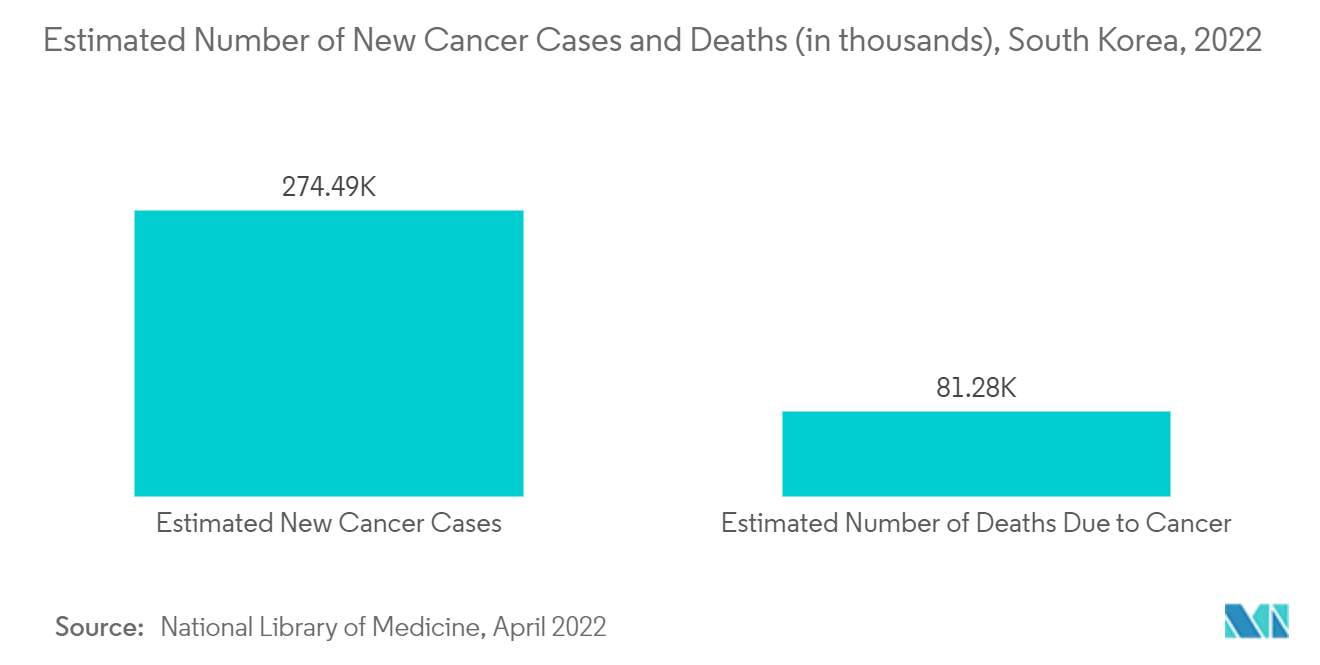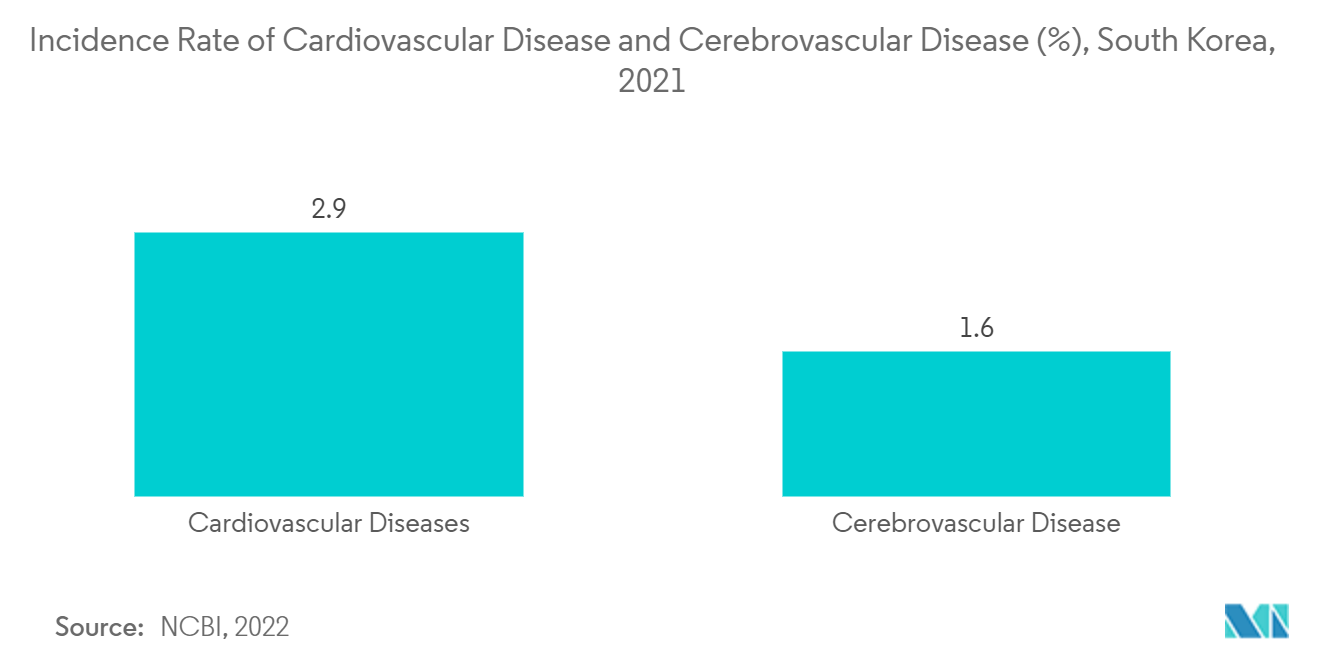Market Trends of South Korea Nuclear Imaging Industry
This section covers the major market trends shaping the South Korea Nuclear Imaging Market according to our research experts:
Single Photon Emission Computed Tomography (SPECT) Segment is Expected to Witness Largest Growth Over the Forecast Period
Single-photon emission computed tomography (SPECT) scan is an imaging test that shows how blood flows to tissues and organs. It can be used to diagnose seizures, strokes, stress fractures, infections, and tumors in the spine. Before a SPECT scan, a tracer is injected into the bloodstream. The tracer is radiolabeled, emitting gamma rays that can be detected by a CT scanner. The computer collects the information emitted by the gamma rays and displays it on CT cross-sections. These cross-sections can be added together to create a 3D image of the brain. The radioisotopes typically used in SPECT to label tracers are iodine-123, technetium-99m, xenon-133, thallium-201, and fluorine-18. These radioactive forms of natural elements will pass through the body and can be detected by the scanner. Various drugs and other chemicals can be labeled with these isotopes.
The high specificity and advantages of SPECT are one of the major reasons for propelling segment growth. For instance, according to the study titled, 'SPECT Imaging' published in January 2022, in the setting of myocardial perfusion testing, SPECT has been shown to have a sensitivity of 82.0% and a specificity of 76.0% for the diagnosis of coronary artery disease. Additionally, those patients with normal myocardial SPECT imaging have a less than 1.0% annual risk of adverse cardiac events. Furthermore, regarding cerebral imaging for the diagnosis of Alzheimer's dementia, SPECT has a sensitivity of 92.0%, and a specificity of 100.0%.
Similarly, according to the study published in NCBI in October 2021, single-photon emission computed tomography (SPECT) is currently in widespread use to non-invasively evaluate patients known or suspected of coronary artery disease (CAD). Furthermore, as per another study published in NCBI in August 2021, cadmium-zinc-telluride (CZT)-SPECT- myocardial perfusion imaging (MPI) demonstrated good sensitivity and specificity to diagnose coronary artery disease as compared to the gold standards.
Therefore, according to the above-mentioned factors the segment is anticipated to witness considerable growth over the forecast period.

Cardiology Segment is Expected to Witness Considerable Growth Over the Forecast Period
Cardiology includes the diagnosis and treatment of diseases that occur in the circulatory system, including the heart and blood vessels. According to a research article published in April 2022, cardiac nuclear medicine helps in the diagnosis and assessment of coronary artery disease. Cardiac nuclear medicine is also used to estimate cardiomyopathy and recognize potential damage to the heart from chemotherapy or radiotherapy.
The increasing use of nuclear imaging in cardiology in South Korea is the major factor propelling the segment's growth. For instance, a research study published in June 2021 indicated that radionuclide cardiac imaging had recently become the most-performed test for the diagnosis of amyloidosis and transthyretin (ATTR) amyloidosis. Nuclear imaging has several advantages in that the method is the only non-invasive diagnostic method. Such advantages of nuclear imaging for diagnosis are likely to add to the growth of the segment over the forecast period. Similarly, as per the NCBI research article published in May 2022, radionuclide ventriculography is highly recommended for the measurement of Left Ventricular Ejection Fraction (LVEF), as the results are reproducible.
Therefore, the increasing use of nuclear imaging in cardiology in South Korea is expected to propel the segment growth over the forecast period.


